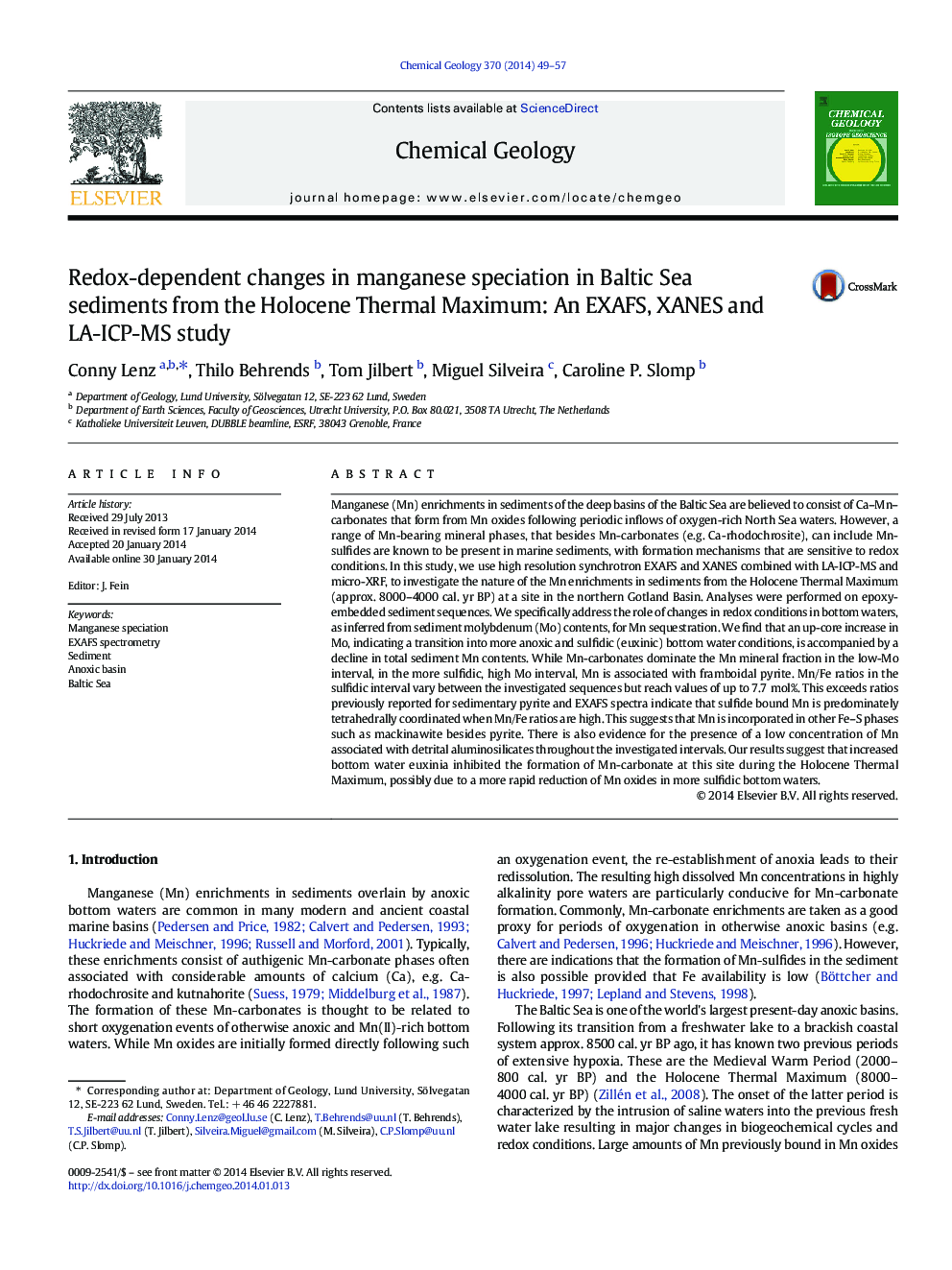| کد مقاله | کد نشریه | سال انتشار | مقاله انگلیسی | نسخه تمام متن |
|---|---|---|---|---|
| 4698783 | 1637600 | 2014 | 9 صفحه PDF | دانلود رایگان |

• Mn contents in the northern Gotland Basin vary during the Holocene Thermal Maximum.
• In these sediments, three major Mn species are identified.
• Mn-carbonates are most abundant and are restricted to relatively oxic conditions.
• Mn is bound in Fe-sulfides when conditions are anoxic and sulfidic.
• Mn bound in aluminosilicates is present at a constant but low background content.
Manganese (Mn) enrichments in sediments of the deep basins of the Baltic Sea are believed to consist of Ca–Mn–carbonates that form from Mn oxides following periodic inflows of oxygen-rich North Sea waters. However, a range of Mn-bearing mineral phases, that besides Mn-carbonates (e.g. Ca-rhodochrosite), can include Mn-sulfides are known to be present in marine sediments, with formation mechanisms that are sensitive to redox conditions. In this study, we use high resolution synchrotron EXAFS and XANES combined with LA-ICP-MS and micro-XRF, to investigate the nature of the Mn enrichments in sediments from the Holocene Thermal Maximum (approx. 8000–4000 cal. yr BP) at a site in the northern Gotland Basin. Analyses were performed on epoxy-embedded sediment sequences. We specifically address the role of changes in redox conditions in bottom waters, as inferred from sediment molybdenum (Mo) contents, for Mn sequestration. We find that an up-core increase in Mo, indicating a transition into more anoxic and sulfidic (euxinic) bottom water conditions, is accompanied by a decline in total sediment Mn contents. While Mn-carbonates dominate the Mn mineral fraction in the low-Mo interval, in the more sulfidic, high Mo interval, Mn is associated with framboidal pyrite. Mn/Fe ratios in the sulfidic interval vary between the investigated sequences but reach values of up to 7.7 mol%. This exceeds ratios previously reported for sedimentary pyrite and EXAFS spectra indicate that sulfide bound Mn is predominately tetrahedrally coordinated when Mn/Fe ratios are high. This suggests that Mn is incorporated in other Fe–S phases such as mackinawite besides pyrite. There is also evidence for the presence of a low concentration of Mn associated with detrital aluminosilicates throughout the investigated intervals. Our results suggest that increased bottom water euxinia inhibited the formation of Mn-carbonate at this site during the Holocene Thermal Maximum, possibly due to a more rapid reduction of Mn oxides in more sulfidic bottom waters.
Journal: Chemical Geology - Volume 370, 26 March 2014, Pages 49–57